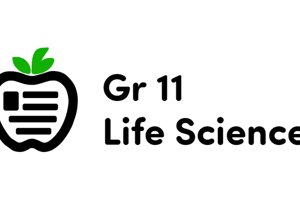Podcast
Questions and Answers
What is the primary function of photosynthesis in green plants and some bacteria?
What is the primary function of photosynthesis in green plants and some bacteria?
- To utilize glucose for immediate energy without any conversion.
- To absorb carbon dioxide for the formation of ozone.
- To produce heat energy for plant growth.
- To convert light energy into chemical energy stored in glucose. (correct)
In which part of the chloroplast does the Calvin Cycle occur?
In which part of the chloroplast does the Calvin Cycle occur?
- Chloroplast envelope.
- Granum.
- Thylakoid membranes.
- Stroma. (correct)
Which of the following molecules are produced during the light-dependent reactions of photosynthesis?
Which of the following molecules are produced during the light-dependent reactions of photosynthesis?
- ATP and NADPH. (correct)
- Glucose and oxygen.
- Chlorophyll and chloroplasts.
- Carbon dioxide and water.
What are the inputs required for photosynthesis as shown in the overall chemical reaction?
What are the inputs required for photosynthesis as shown in the overall chemical reaction?
Which of the following statements about the products of photosynthesis is true?
Which of the following statements about the products of photosynthesis is true?
How does photosynthesis contribute to easing climate change?
How does photosynthesis contribute to easing climate change?
What role does chlorophyll play in photosynthesis?
What role does chlorophyll play in photosynthesis?
Why is photosynthesis essential for aerobic organisms?
Why is photosynthesis essential for aerobic organisms?
Flashcards are hidden until you start studying
Study Notes
Overview of Photosynthesis
- Photosynthesis converts light energy into chemical energy stored as glucose, a crucial process for life on Earth.
- This process supports nearly all ecosystems by serving as the primary energy source.
Basic Equation of Photosynthesis
- The overall reaction for photosynthesis is summarized as:
- 6CO₂ + 6H₂O + light energy → C₆H₁₂O₆ + 6O₂
- Carbon dioxide (CO₂) and water (H₂O) are transformed into glucose (C₆H₁₂O₆) and oxygen (O₂) through light energy.
Key Steps in Photosynthesis
-
Light-Dependent Reactions:
- Take place in the thylakoid membranes of chloroplasts.
- Chlorophyll captures light energy, exciting electrons.
- Produces ATP (adenosine triphosphate) and NADPH (nicotinamide adenine dinucleotide phosphate), which store energy for later use.
-
Calvin Cycle (Light-Independent Reactions):
- Occurs in the stroma of chloroplasts.
- Utilizes ATP and NADPH from light-dependent reactions.
- Converts carbon dioxide into glucose using a series of enzyme-assisted steps.
Importance of Photosynthesis
-
Oxygen Production:
- Generates oxygen as a byproduct, essential for the respiration of most living organisms.
-
Foundation of the Food Chain:
- Provides energy directly to plants, enabling entry into the food chain for herbivores and subsequently for carnivores.
-
Carbon Dioxide Reduction:
- Helps lower atmospheric levels of CO₂, a greenhouse gas, contributing to climate regulation.
Conclusion
- Photosynthesis is vital for sustaining life by delivering energy and maintaining atmospheric oxygen levels.
Studying That Suits You
Use AI to generate personalized quizzes and flashcards to suit your learning preferences.




